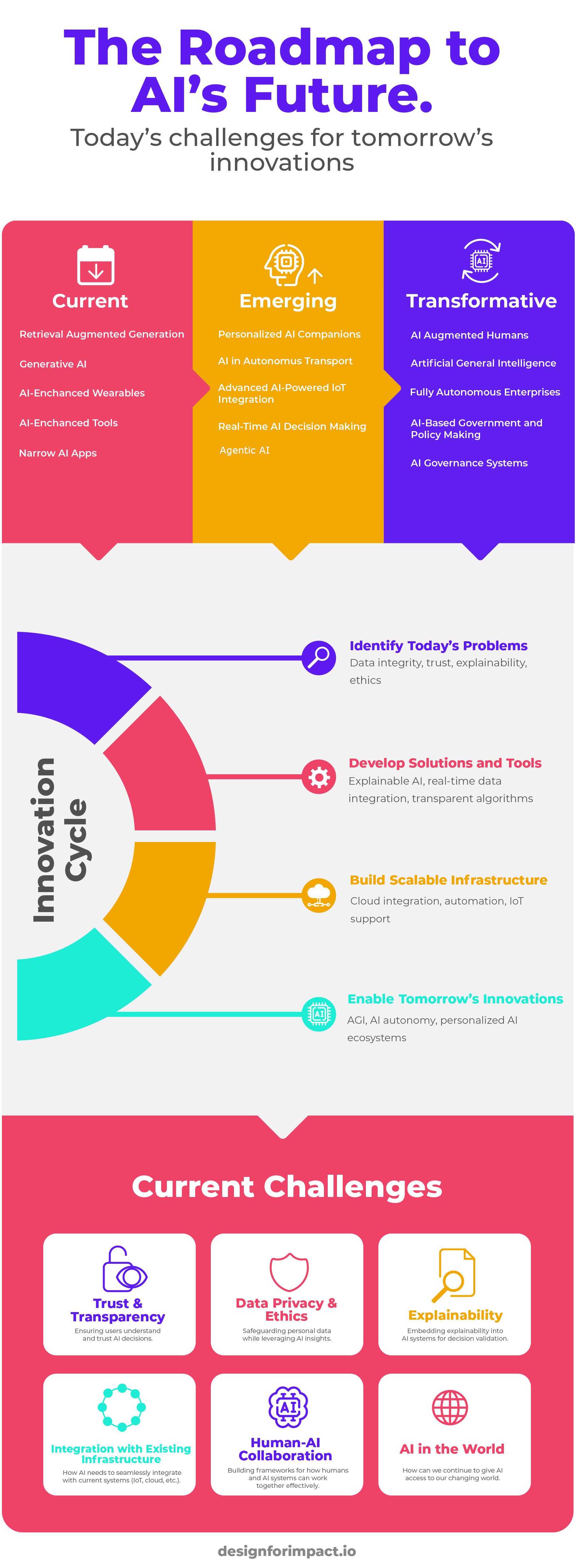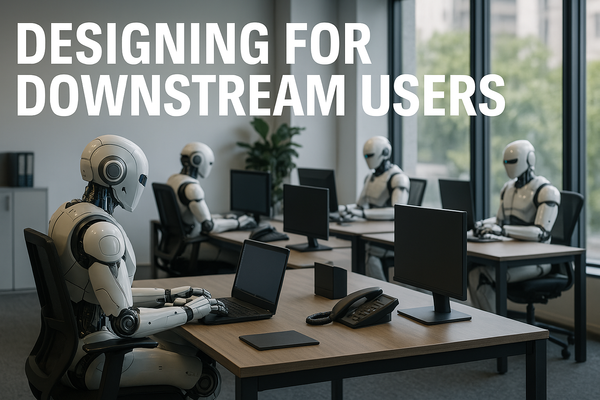The Future of AI: Preparing for the Shift from Intentional Use to Seamless Integration

Remember the not-so-distant past of telecommunications. There was a time when making a phone call meant planning your day around finding a phone booth, ensuring you had change in your pocket, and hoping the person you were calling was near a phone. Fast forward to today, and telecommunications are no longer something we plan for—they’re embedded in our daily lives. With cell phones, VoIP, and even global satellite networks like Starlink, being “disconnected” is now the exception rather than the rule.
AI is following a similar path. Not long ago, it was a niche technology used mainly in research labs or special applications most people never encountered. But with generative AI, we now have powerful tools at our fingertips—driving creativity, automating workflows, and solving complex problems. Yet, for all its promise, AI still feels like a separate tool we turn to rather than an everyday companion in our workflows.
The question for product leaders isn’t whether AI will achieve this seamless integration, but how they can prepare now to enable that future. AI is rapidly moving toward a world where it’s always present, adding value across devices and systems. But reaching that vision requires product leaders to address today’s challenges—around trust, ethics, commercial viability, transparency, and explainability. The visual below lays out a path product leaders can take to build AI into an ever-present, trusted part of our daily experience.

The Current Horizon: Ambient AI and the Need for Transparency
Right now, AI is becoming more of an ambient presence—a technology that works in the background without requiring our active engagement. Instead of opening a separate app, AI will increasingly work quietly in our phones, smartwatches, and even appliances. Today’s smartphone cameras, for instance, use AI to automatically adjust lighting, sharpen focus, and suggest the best moment for a photo. But soon, AI might go beyond that, analyzing surroundings, offering context-driven insights, and enhancing our decisions wherever we go.
This shift toward ambient AI isn’t just about embedding technology; it’s about building trust and transparency. Users want to know how AI decisions are made, what data is used, and how it impacts their experience. Product leaders who address these transparency concerns now are laying the groundwork for the next big step in AI development: autonomy.
Adding transparency and explainability features, such as showing the reasoning behind AI recommendations, can help build the necessary foundation of trust. This way, we create an invisible yet reliable partnership between AI and the user, setting the stage for the next horizon in AI: agency.
Emerging Horizon: Agentic AI and the Push Toward Trust in Autonomy
The next horizon in AI’s evolution shifts from background support to agentic AI—autonomous systems with agency that make and execute decisions on their own, based on real-time data. Once AI systems earn our trust, agentic AI will have the freedom to act without clearing every decision with a human. This independence dramatically speeds up response times, allowing AI to be proactive, taking initiative to solve issues before they even reach us.
Picture AI systems monitoring a company’s IT infrastructure, spotting threats, and fixing them in real time, all without waiting for human input. Agentic AI can be a powerful tool for addressing issues proactively, saving time, and avoiding problems before they escalate. But autonomy requires more than just the right technology—it requires public trust and a clear alignment with ethical standards.
Ethics become crucial as AI gains agency, especially when it operates in areas impacting human well-being, such as healthcare, finance, or security. Product leaders must create frameworks to ensure AI decisions align with societal values and are responsibly implemented. By establishing ethical guidelines early on, product leaders can address concerns around autonomy while providing a safeguard against unintended consequences.
Commercial viability also becomes a pressing issue in this stage, as agentic AI often requires substantial infrastructure investment. To succeed in the market, autonomous systems must not only perform well but also deliver tangible ROI. Product leaders should evaluate whether agentic AI aligns with core business objectives and customer demands, ensuring that the investment in AI’s autonomy pays off in real-world applications.
The Innovation Cycle: Preparing for the Transformative Horizon by Solving Today’s Challenges
As AI moves through the innovation cycle, the intersection of trust, ethics, and commercial viability becomes even more critical. Commercial success in AI requires a clear value proposition, not just innovation for innovation’s sake. To reach the transformative horizon where AI plays a central role in daily life, companies need products that customers find both accessible and valuable. By embedding ethical standards and commercial viability into AI development, product teams can create solutions that are not only technically sound but also broadly accepted by users and society.
By addressing these foundational challenges today, companies can capture value while advancing responsible innovation, making AI a long-term asset in the marketplace.
The Next Frontier: Integrating AI with Systems and Tools for a Resilient Future
As AI becomes central to industry infrastructure—monitoring system health, optimizing performance, and responding to security threats—it needs more than data. It needs the ability to observe, move, and interact with the world around it, like a body does with sensory organs and limbs.
Think of AI today as a powerful brain that processes and analyzes information. But for true functionality, it needs “eyes,” “hands,” and “feet” to act in real time. Cameras in smartphones, for example, serve as the “eyes” enabling visual input, while robotics and IoT devices act as “hands and feet,” helping AI interact physically with its environment.
This integration allows AI to gather, learn from, and act on new information across a vast array of contexts, whether it’s industrial automation, healthcare, or personalized consumer products. Just as the human body combines sensory inputs and physical movement to navigate the world, AI must integrate seamlessly with external systems to become a fully functional, resilient part of our digital ecosystem.
For product leaders, the challenge lies in building robust systems that can keep pace with AI’s growth, while ensuring these integrated systems remain secure, ethical, and trustworthy.
What Product Leaders Should Focus on Today
Achieving AI’s full potential is as much about strategic foresight as it is about technology. Here’s where product leaders should focus to prepare for this future:
- Build Ambient AI: Integrate AI deeply so it adds continuous, seamless value without active user input.
- Prepare for Agentic AI: Identify areas where AI can act independently within your ecosystem, taking real-time actions without human oversight.
- Focus on Trust and Transparency: Make transparency and explainability core features, especially in applications where safety data alone may not be enough to gain public confidence.
Conclusion: Preparing for an Integrated, Trustworthy AI Future
The path to fully integrated, trustworthy AI involves balancing innovation with challenges around trust, ethics, commercial viability, transparency, and explainability. As Marc Benioff recently noted, AI has yet to deliver fully on its promise. This article is our community’s way of accepting that challenge—to shape AI in ways that drive true value, affordability, and effectiveness. It’s up to us, as product leaders, to play our part in creating AI solutions that push the world closer to what we imagined.
The future of AI is accelerating, with vast potential for product leaders to transform the field. The question remains: are you ready to lead the way?



